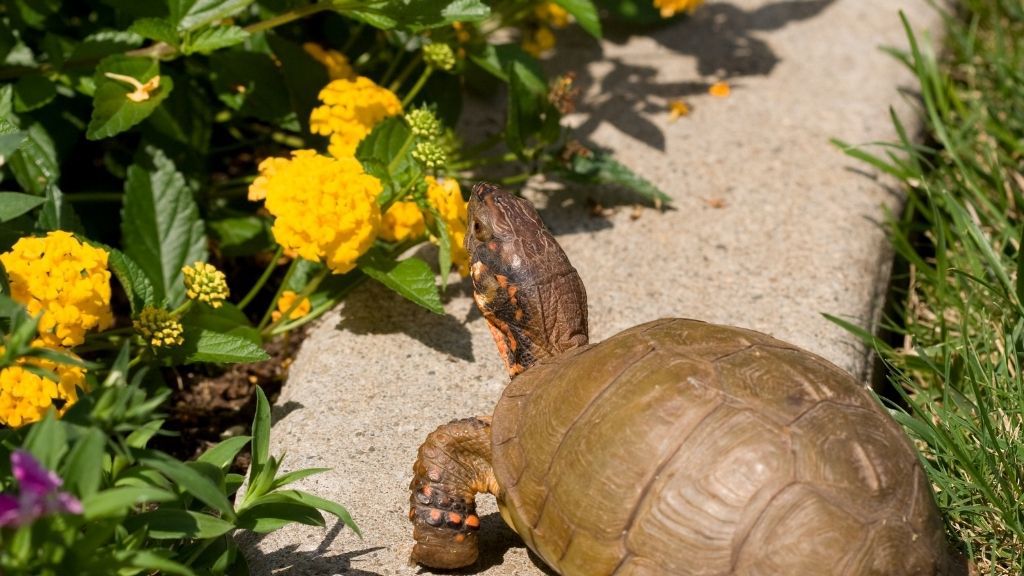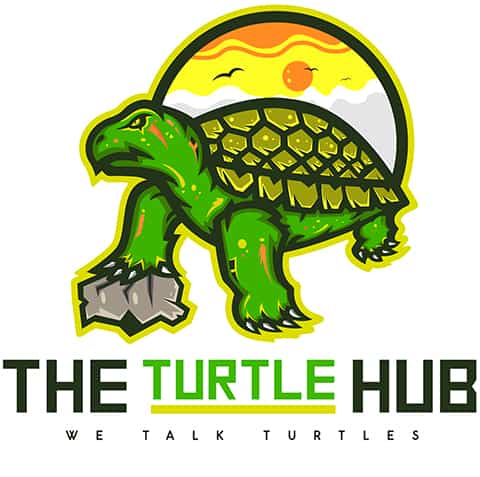Tags:
What Vegetables Can Box Turtles Eat? [Safe & Unsafe List]


fact checked & review by
Dr. Partho Kumar Shaha
Veterinarian (DVM)
The information is current and up-to-date in accordance with the latest veterinarian research.
As an owner of a box turtle, your first concern is your pet’s health. Diet is the most crucial factor in maintaining your box turtle’s health. Box turtles are omnivores. At least 30% of your box turtle’s diet should be vegetables. So, what vegetables can box turtles eat?
Box turtles may eat any vegetable offered to them. But not all vegetables are good for box turtles. Some vegetables are more nutritious than others. Dark leafy green, yellow, and orange vegetables are the best options as they are rich in calcium, vitamin A, and minerals.
Need help determining which vegetables are best and safe for box turtles? Then read this article to understand which vegetables you should feed to a box turtle.
What Vegetables Should You Feed to Your Box Turtle?
Just because box turtles show interest in eating vegetables does not mean you should give them any food without considering the nutrient value. Moreover, some vegetables can harm your box turtle more than good.
To understand which vegetables, you can feed to your box turtle, you need to know which nutrients are crucial for turtles. Turtles need the following nutrients:
- Protein
- Calcium
- Vitamins (especially Vitamin A)
- Minerals
- Dietary fiber
- Water
Box turtles get most of their protein from animal-based foods, which consist 60% of their diet. Turtles rely on plants, vegetables, fruits, and insects for other nutrients like calcium, vitamins, and minerals.
Now, let’s see which vegetables contain the essential nutrients for box turtles:
Vegetables Containing Vitamin A
Vitamin A is crucial for box turtles. Vitamin A deficiency is very common among pet turtles. Lack of Vitamin A in your box turtle’s diet can cause various diseases such as respiratory infection, vision problems, and Aural and ear abscesses.
To prevent Vitamin A deficiency, you must add vegetables rich in Vitamin A to your box turtle’s daily diet. Many dark leafy greens contain Vitamin A. You can also give your turtle yellow, red, or orange color vegetables.
Here are some vegetables containing Vitamin A:
- Squash
- Carrots
- Bell paper
- Pumpkin
- Sweet potatoes
- Dandelion greens
- Kale
- Parsley
- Cilantro
- Collard greens
- Mustard greens
- Red leaf lettuce

Vegetables Containing Calcium and Phosphorus
Box turtles get most of their calcium from vegetables and insects. They need calcium to develop their shell and bones. Lack of calcium causes metabolic bone disease and shell deformation. So, you must feed your turtles vegetables containing calcium. Not all vegetables contain a high amount of calcium. Some vegetables have a higher amount of phosphorus than calcium.
Phosphorous is an essential mineral for humans, but it is not safe for box turtles. Yes, a little bit of phosphorous is necessary for some flexibility in a turtle’s shell. But high consumption of phosphors pulls out calcium from a turtle’s bone and shell, making them weak.
Therefore, you must always consider the calcium-to-phosphorus ratio before feeding a vegetable to your turtle. Always try to feed vegetables that have a higher ratio than phosphorous. The calcium o phosphorus ratio can be 1.5: 1, 2:1, 5:2, etc.
Here is a calcium-to-phosphorus ratio chart of vegetables that can help you to choose the suitable vegetable for your pet box turtle. You can also see how frequently you can give these veggies to your turtle.
| Vegetables | Calcium to Phosphorus Ratio | Frequency of Feeding |
|---|---|---|
| Collards | 14.5:1 | Regularly |
| Mustard Spinach | 7.5:1 | Regularly |
| Turnip Greens | 4.5:1 | Regularly |
| White goosefoot | 4.3:1 | Regularly |
| Dill Weed | 3.2:1 | Regularly |
| Beet Greens | 2.9:1 | Regularly |
| Dandelion Greens | 2.8:1 | Regularly |
| Chinese Cabbage (pak-choi) | 2.8:1 | Occasionally |
| Lettuce, Loose leaf | 2.7:1 | Occasionally |
| Mustard Greens | 2.4:1 | Regularly |
| Parsley | 2.4:1 | Occasionally |
| Kale | 2.4:1 | Occasionally |
| Chicory Greens | 2.1:1 | Occasionally |
| Spinach | 2.0:1 | Less Frequently |
| Watercress | 2.0:1 | Occasionally |
| Cabbage | 2.0:1 | Occasionally |
| Endive (Escarole) | 1.9:1 | Occasionally |
| Celery | 1.6:1 | Less Frequently |
| Purslane | 1.5:1 | Less Frequently |
| Cilantro | 1.4:1 | Less Frequently |
| Lettuce, Butterhead (Boston, Bibb) | 1.4:1 | Occasionally |
| Okra | 1.3:1 | Occasionally |
| Swiss Chard | 1.1:1 | Occasionally |
| Turnip | 1.1:1 | Occasionally |
| Squash (Winter, all varieties) | 1.0:1 | Regularly |
| Green Beans | 1.0:1 | Regularly |
| Lettuce, Romaine | 0.8:1 | Occasionally |
| Sweet Potato | 0.8:1 | Regularly |
| Rutabaga | 0.8:1 | Occasionally |
| Broccoli | 0.7:1 | Less Frequently |
| Cucumber (with skin) | 0.7:1 | Less Frequently |
| Endive, Belgian (Witloof Chicory) | 0.7:1 | Less Frequently |
| Carrots | 0.6:1 | Regularly |
| Squash (Summer, all varieties) | 0.6:1 | Regularly |
| Brussels Sprouts | 0.6:1 | Less Frequently |
| Cauliflower | 0.5:1 | Less Frequently |
| Kohlrabi | 0.5:1 | Less Frequently |
| Pumpkin | 0.5:1 | Less Frequently |
| Alfalfa Sprouts | 0.5:1 | Less Frequently |
| Parsnips | 0.5:1 | Less Frequently |
| Peppers, Green | 0.5:1 | Less Frequently |
| Peppers, Red | 0.5:1 | Less Frequently |
| Sweet Potato Leaves | 0.4:1 | Less Frequently |
| Beets | 0.4:1 | Less Frequently |
| Asparagus | 0.4:1 | Less Frequently |
| Tomato | 0.2:1 | Occasionally |
| Corn, White | .02:1 | Less Frequently |
You can clearly understand which vegetables you can feed to your box turtle. Green vegetables have a high amount of calcium.
Some vegetables like sweet potatoes and carrots have low calcium but contain Vitamin A. So, to balance the calcium and phosphorus ratio, you can give your turtle vegetables high in calcium and low in phosphorus, like collards, mustard spinach, or turnip greens with carrots or sweet potatoes.
Also, some vegetables have little to no nutrient value for box turtles. These vegetables can be healthy for humans but less for turtles. These are cucumbers, iceberg lettuce, eggplants, and some mushrooms. These vegetables may fill your box turtle’s belly but lack essential nutrients.

What Vegetables Are Bad for Box Turtles?
By now, you know which vegetables are best for box turtles. You better avoid adding vegetables having too much phosphorus. Some other vegetables contain high concentrations of oxalic acid that can bind with calcium and hinder its uptake. Here are the vegetables you must not give your box turtle under any circumstances:
- Tobacco leaves
- Tomato leaves
- Potato leaves
- Rhubarb
- Poison ivy and other irritating plants
How to Feed Vegetables to Your Box Turtle?
Here are some tips on feeding vegetables to your box turtle:
- 30% of your box turtle’s diet should consist of fresh vegetables. Give three tablespoons of mixed vegetables to your adult box turtle three to four days a week. Baby turtles need to be fed every day.
- Give your pet organic vegetables that have no pesticides or other chemicals. Always wash the vegetables with clean water before feeding them to your box turtle.
- Cut hard and large vegetables into small pieces to make it easy for your turtles to eat.
Before You Go
Feeding vegetables is not enough to keep your box turtle healthy. You should know the complete diet plan for your precious pet. So, read my next article about the box turtle diet plan here.
Box Turtle Food, Diet & Feeding Guide [DOs and DONTs]

About Author
Muntaseer Rahman started keeping pet turtles back in 2013. He also owns the largest Turtle & Tortoise Facebook community in Bangladesh. These days he is mostly active on Facebook.
Disclaimer
This site is owned and operated by Muntaseer Rahman. TheTurtleHub.com is a participant in the Amazon Services LLC Associates Program, an affiliate advertising program designed to provide a means for sites to earn advertising fees by advertising and linking to Amazon.com. This site also participates in other affiliate programs and is compensated for referring traffic and business to these companies.
